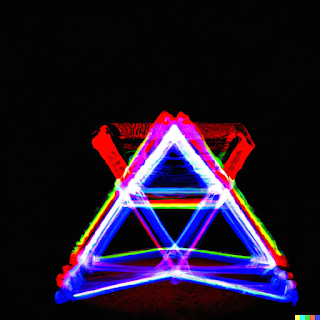Holograms by sound
A sound wave, when it hits an object, creates a series of folds (or ripples) in space. Before moving forward go through the following to sync with -
The point is a sound wave when it hits an object, creates a series of folds (or ripples) in space. The key to creating this hologram using sound was to manipulate the ripples in such a way that they would vibrate at very specific frequencies and cause them to align with each other into the same plane like crests meeting crests. Once all of these waves are arranged in a plane, one can interact with the waves to create an illusion of a three-dimensional object.
The holograms illusion!
Unlike light, which travels at a constant speed through 3D space, To create a three-dimensional image with sound waves, you must arrange all of the waves in a plane. Once this is done, one can interact with the waves to create an illusion of a three-dimensional object. A good example would be when you play music around your ear and use lasers that project images onto your eye so that you see both motion and color simultaneously (this effect is called “binaural beats”). Once all of these waves are arranged in a plane, one can interact with them to create an illusion of a three-dimensional object. This could be done by playing music around someone's head while they look at something else through binoculars or by creating holograms using lasers themselves. The technology can be used to control matter as light does with laser beams. In fact, the hologram is actually made up of many small cylinders of air about the size of human hair that is suspended in place by sound.
The future of sound holograms is bright!
When I talked about the haptic feedback by the soundwaves from the transducer which forms the shape of the object that the user can feel and interact with as a real object, just like that using liquid and color we can actually recreate the sound shapes which are actually coming out from the thick layer of the metal platform which has the shape which we want to show as the hologram and when the sound comes out of the carved shape it forms the 3D shape which can not only be seen but also can be interacted by the user. With this doctors and medical specialists can use it to scan the human body and clearly interact with the problem ( like kidney stones and etc). With the help of sound, we actually eliminate the use of harmful lasers and lights.
Holograms from scratch.
Holograms are created by using light waves to create an interference pattern on a flat surface. This can be done with lasers and lenses, but sound waves may also be used. In this case, the hologram is made by using a sound wave that is reflected off an object and then sent back through another object (like glass). The first object creates a reflection of itself in its surroundings; however, since there was no source for this initial reflection at all and therefore no way for us to see if we call this process “holographic". The result looks like any other three-dimensional image you’ve seen before: lots of details and depth!
Sound of Hologram
Conclusion -
This technology could be used to create 3D holograms that are even more lifelike than the ones we see in movies. The ability to create sound holograms by manipulating ripples in space means that they can now be made with much less of a focus on lighting effects, which will open up new ways of creating realistic images. In addition, this new method could lead to other exciting applications such as controlling matter with sound waves and creating colors from sound (Is that possible?)as well!


1 Comments
Unlike traditional light-based holograms, sound wave holograms manipulate acoustic ripples to create 3D illusions. By aligning sound waves at precise frequencies, researchers can generate floating images and even interactive shapes. This technology has potential applications in medicine, allowing doctors to visualize and interact with internal body structures without harmful radiation. As sound-based holography advances, it could revolutionize display technology, haptic feedback, and medical imaging.
_________________________________
gadget salvation